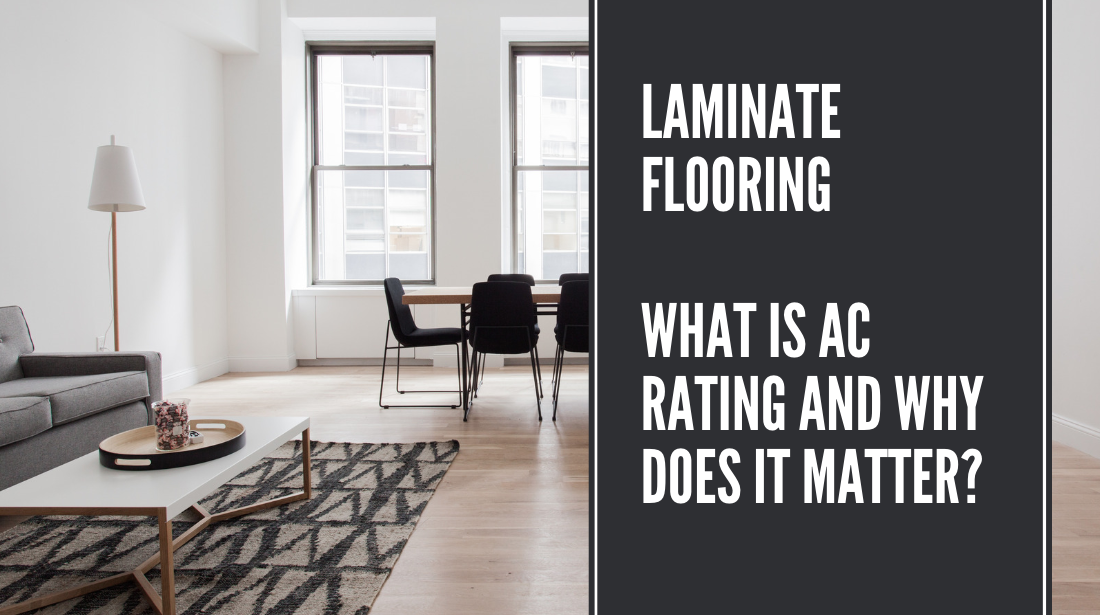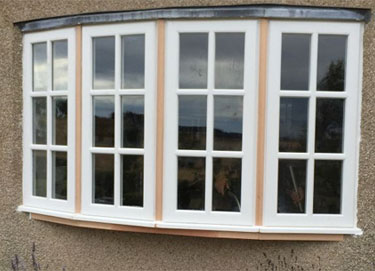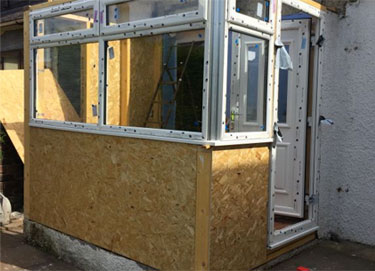When choosing laminate flooring, you need to consider wear ratings along with price and style.
In laminate flooring, a wear rating is an indicator of how well the floor will stand up to daily wear and tear.
Modern laminate floors are attractive, versatile and durable, but they can be scratched or gouged. All laminate flooring has a wear rating denoted by an AC, “Abrasion Class,” followed by a number. There are five AC ratings for laminate floors, ranging from AC1 for low-traffic areas to AC5, meant for commercial use.
AC Rating – Laminate Flooring
Abrasion Class (AC) Ratings are broken down into five levels, labeled AC1 through AC5.
The AC Ratings are as follows:
AC1 Rating – Laminate Flooring
AC1 is for home use with minimal traffic, like bedrooms or closets.
Floors with this rating are suitable only for moderate residential use such as a bedroom or a closet.
We really can’t recommend using an AC1 rated floor for any room of your home, as even the average bedroom gets a fair amount of traffic.
The inside of a closet or walk-in the area would probably fare decently with an AC1 floor, but as we said above, we always recommend AC3 or higher.
AC2 Rating – Laminate Flooring
AC2 is suitable for moderate-traffic home use like living rooms and dining rooms.
AC2’s are suitable for “Normal residential” applications, such as living rooms and dining rooms.
They’ll stand up to the average day to day foot traffic, though I’m sure that most of you will agree that the kind of wear and tear your floor goes through in your home could in no way ever be classified as “normal”!
AC3 Rating – Laminate Flooring
AC3 is best for higher traffic and heavy-use residential areas like kitchens or laundry rooms, and can be used in light commercial applications like small offices or hotel rooms.
Good for all residential applications, and the lowest grade of laminate flooring we stock here at Discount Flooring Depot.
This will do the job for the average home and will withstand daily wear and tear easily in any room in line with the wear and stain year guarantee, as long as it’s treated right and cleaned properly. If you want a little more durability out of your laminate or vinyl floor, then read on – you’re looking for an AC4 or AC5.
An AC3 will also do the business in business, too.
A moderate commercial environment will be just fine for the AC3 variety.
“Moderate” generally means something around a hotel room or a small office.
The floor here in the DFD office is an AC3 and three years later it still looks good as new, despite the footfall from nervous pacing, and the wheeling of chairs across it. Common sense prevails here, and a floor that frequently has chairs scraped across it, receives a lot of traffic from high heels and boots, and isn’t properly cleaned and maintained will face problems.
AC4 Rating – Laminate Flooring
AC4 is designed for light commercial use like small shops.
Now we’re talking. An AC4 is good for any and all residential applications, within reason.
It’s also perfect for general commercial applications, such as offices, boutiques and cafes.
Be aware that while an AC4 laminate can be good in a bar, cafe, or restaurant, not all laminates are water resistant, and spillages, heavy duty mopping, or steam mopping will cause severe damage to the floor and could cause it to squeak, or even worse, buckle.
AC5 Rating – Laminate Flooring
AC5 is the heaviest rating, used in larger commercial settings.
More than enough for all residential applications.
Plus it’ll do the business for heavy commercial applications like public buildings, department stores, and so on.
Just be aware once more that AC5 means that the laminate is thicker and more durable, but it has little to no effect on the laminates ability to resist water, so care will have to be taken when washing or mopping the floor.
Choose Your AC Rating Laminate Flooring
Lower AC ratings may be less expensive, but it’s a good idea to look at lifetime use.
How long a floor will last depends on many factors, including level and type of traffic and how it’s maintained.
In a household with pets or small children, a higher AC rating will provide longer floor life, while a room that gets little use would be fine with a lower rating.
Manufacturer’s warranties start at 10 to 15 years, and many go as high as 25 or 30 years for higher wear ratings.
When choosing the right wear rating, look at budget as well as lifestyle and budget for repairs and replacement down the road before deciding what’s right for you.
The Wear Layer – AC Rating
The wear layer is the top layer of the laminate floor; it’s what chairs get dragged over and people walk on and drop things on.
It’s what takes the “wear” of life.
Higher wear ratings translate to a longer life for your laminate floor and a higher price tag than lower wear ratings.
Each rating number represents a 60% increase in wear over the previous one:
AC2 is 60% heavier wear than AC1, for example, while AC3 is 120% heavier wear than AC1.
Higher wear ratings can cause a slightly cloudy look from a thicker layer of aluminum oxide, which can dull the appearance of the decor layer.
Laminate Tips
1 – If water resistance is the issue, thicker floors will only help a minimum amount. Spillages and high moisture will still cause issues, making a laminate relatively unsuitable for bathrooms or kitchens, unless great care is taken.
For this reason, we can’t recommend using a laminate for a busy commercial kitchen or bathroom.
If you’re set on a laminate, check out our Hydro Guard range. which are fully resistant.
Alternatively, we’d recommend our Vinyl floors, which are all fully water resistant and come in a range of styles, from tiles, through to wood and stone effects.
2 – Make sure you’ve got a floor strong enough for what it’s going to be used for. Don’t think that you can skimp and get an AC3 floor for heavy commercial use. Your floor will wear away and break before too long and the money you saved on a cheaper product will be wasted when you have to replace it.
4 – Leave expansion gaps in your laminate to allow for moisture and swelling, and make sure you leave it to acclimatise before you lay it. The strength of your floor doesn’t mean much if it buckles because there wasn’t an adequate space for expansion left. Spend a little time and effort on correct installation and you’ll reap the rewards from a longer lasting floor.






